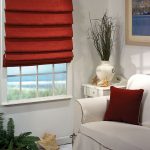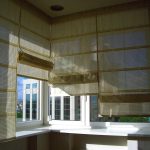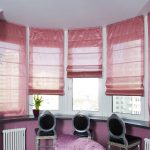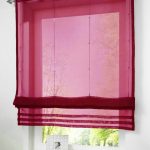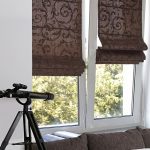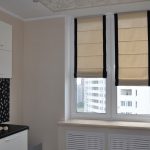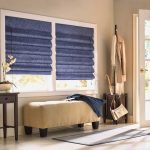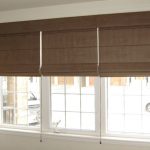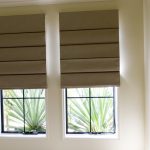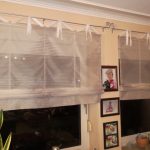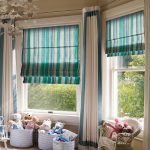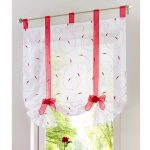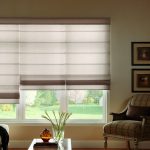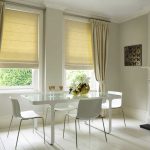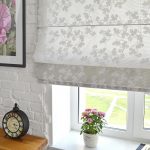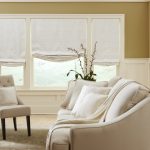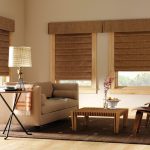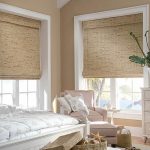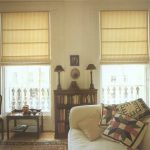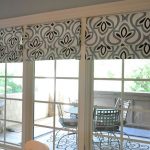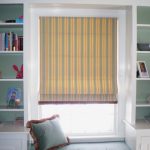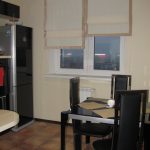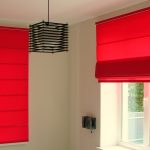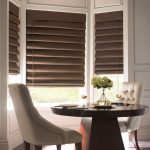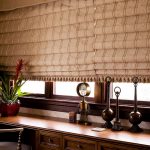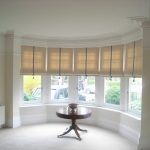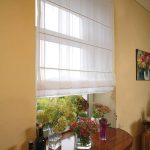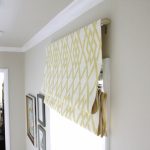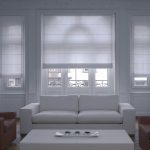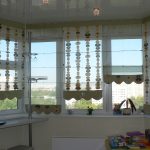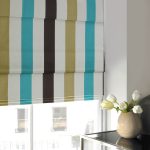How to sew roman blinds do it yourself: step by step instructions
Probably, the Romans invented the Roman blinds themselves. The principle of their work is obvious and does not change for centuries, which is why they remain invariably popular. The basis of the design is a straight cloth fabric, gathering folds with a cord. Blinds can be designed in different styles, giving the room a strict or playful look, completely blocking the sun’s rays or leaving a pleasant diffused light. The obvious advantage of this decor is that it will take one day to make Roman curtains by yourself.
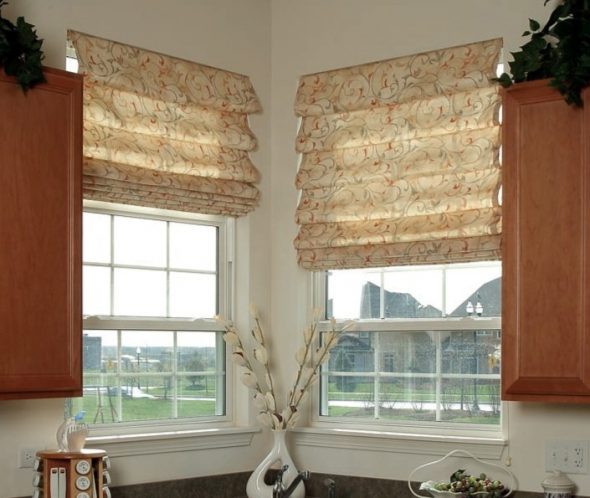
Roman curtains can be with inserts and without, with soft folds and with hard inserts on the type of blinds
A useful feature of curtains that are simple in shape and design is a snug fit to the windows. At the request of the owner, they almost completely coincide with the size of the glass. This provides a reliable way to ensure the darkening of rooms of any size. The whole construction takes up minimal space, is extremely simple, almost does not break, it is easily restored. The canvas is removed from the eaves, self-erasing, and from time to time you can get by with a dry cleaning with a brush on a long handle.
Modern industry produces a wide range of convenient ready-made structures for installation of any blinds. With purchased roller blinds, the window design process is shortened. Gardin can also be made from scrap materials. Below is a detailed instruction how to make Roman curtains with your own hands.
Content
- 1 Roman curtains: description, design features, types of materials
- 2 How to sew roman blinds do it yourself
- 3 The design of the curtains, which components are necessary for manufacturing
- 4 Materials and care for them
- 5 Step-by-step instructions for beginners how to make a Roman curtain with your own hands
- 6 Roman curtains in the kitchen with their own hands
- 7 Scheme of the Roman curtains, details of the design with photos for beginners
- 8 Recommendations for beginners in making roman blinds
- 9 Conclusion
- 10 Video: Roman curtain do it yourself
- 11 Photo gallery of finished Roman curtains in the interior:
Roman curtains: description, design features, types of materials
Roman curtains of all classic draperies are the most concise and neat, because they are a flat cloth of unfolded. They remain consistently popular in Italy. When opening the window, the material folds in large or moderate parallel folds, opening up access to light. Draperies are created on the basis of several strips sewn into the fabric. For installation also use "Roman" cornices, equipped with elementary mechanisms for lifting the fabric. The drapery level is fixed by means of a special control mechanism with a chain. In a simpler version, the cord supporting the folds is simply wound on a small hook in the wall by the window.
Important! Most often, woven blinds are close in size to the window area and do not cover the walls around, so there is very little material for them.
When hanging curtains are placed inside the window opening. There are cases when the curtain is placed outside, the curtain covers the frame itself, as well as part of the wall around it. It is possible to create an expressive ensemble without additional tricks, having originally picked up the texture and color. Traditionally choose monophonic canvases.Try to come up with your own drawing (stripes, flowers, ornaments), apply a photo image, self-made drawing.
In the classic version, the model of drapery layout assumes from 3 to 5 large folds formed at equal distances from each other. The quantity depends on the designer's imagination. The folds are placed in the lower part of the curtain, then when it is open it will be half smooth. If you do not use textile tape or rigid rods for fastening the rings, then the assemblies will be soft and drape.
Blinds are decorative, functional or combined. The main characteristic is the transparency of the material. According to the degree of light transmission materials are divided by type:
- Blackout is a dark material that does not let light through. It is mainly used in places where darkness is needed to the maximum, in the bedroom, home cinema, children's room. The fabric is thick, often natural.
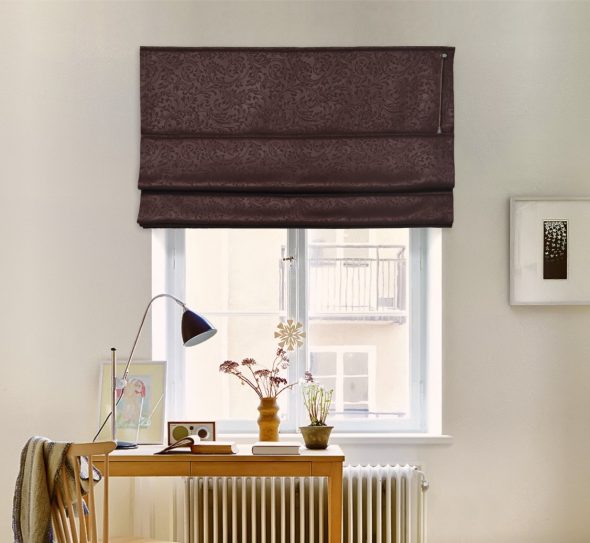
Universal Roman blinds chocolate black out of fabric with dimming
- "Dimaut" - translucent materials, but not tulle or muslin. Pass about 30% of the light flux. Good for decoration, optimally combined with traditional curtains. They are suitable for rooms where people not only relax, but also receive guests, work. Used in the dining room, living room, library, office.
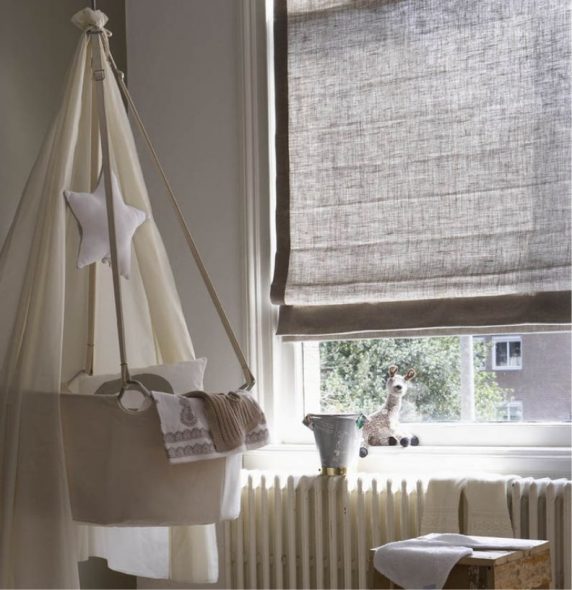
Roman curtains dimaut partially pass the light, but it does not let the heat of the sun
- Fully transparent materials - tulle, organza, tulle mesh. Used alone or combined with other materials. The functional load of such curtains is not great, their main task is to create a harmonious decor, beautiful interior.
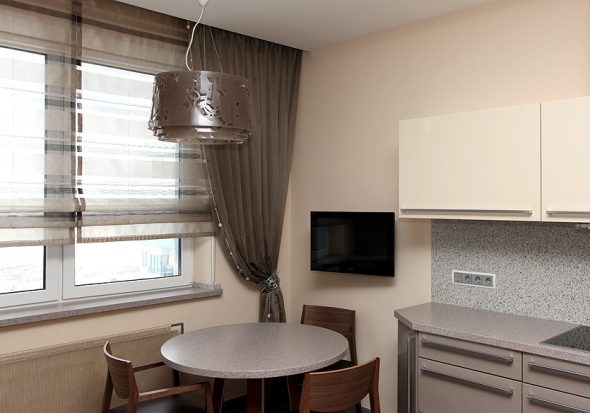
Transparent Roman blinds are very popular due to the fact that they fit perfectly into any interior.
How to sew roman blinds do it yourself
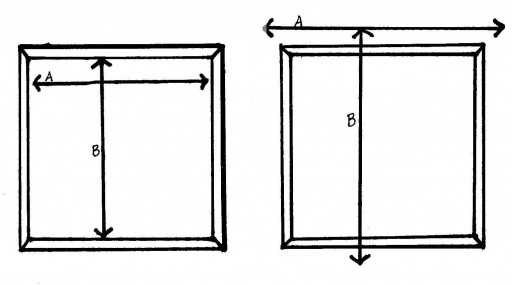
Determining the size of the Roman curtains depending on the method of attachment
The first stage in the manufacture of Roman blinds - window metering. In relation to the length and width of the glass, the size of the web will be greater:
- in height by 4 cm hem plus 15 cm allowances for inserting a weighting rod inside (only 19 cm);
- width - plus 2 cm, designed for processing slices on each side (only 4 cm).
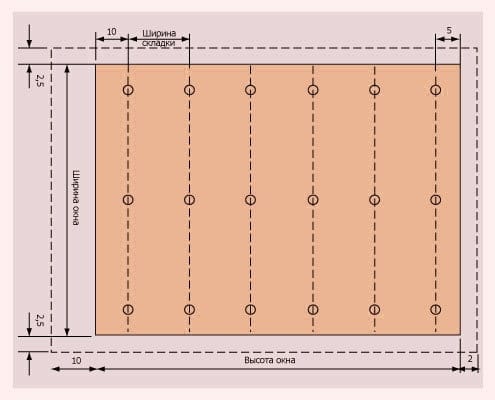
Cutting Roman curtains: the calculation scheme of the fabric
For installation of shutters, they harvest a bar or purchase a ready-made roller shutter. A standard round cornice of small diameter (usually they are metal) or a wooden beam 3 cm in diameter will fit. Its length is less than the width of the material by the amount of the hem. Using a ready-made roller shutter, you need to remember a few centimeters that are needed for the plugs - if you do not calculate them, when you open the window, the mount will break against the wall.
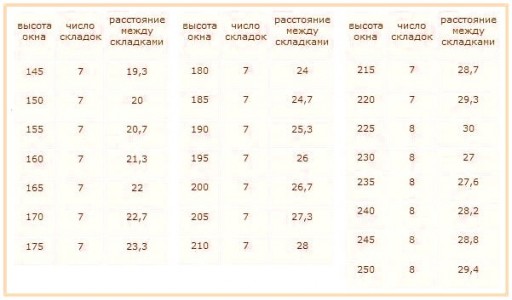
The calculation of the number and size of folds for the Roman blinds will help determine the best option
The design of the curtains, which components are necessary for manufacturing
The design of the Italian blinds remains as reliable as in the days of the ancient Romans. Innovations relate primarily to materials, control devices. When making blinds at home, it is permissible to do without the latter. The basis of the design is a bar on which the fabric and cords that lift it are mounted. The rest is parts that are used at their discretion.
Ready-made blinds, which will save one-third of the total volume of work, are sold in building supermarkets. They are:
- open or closed;
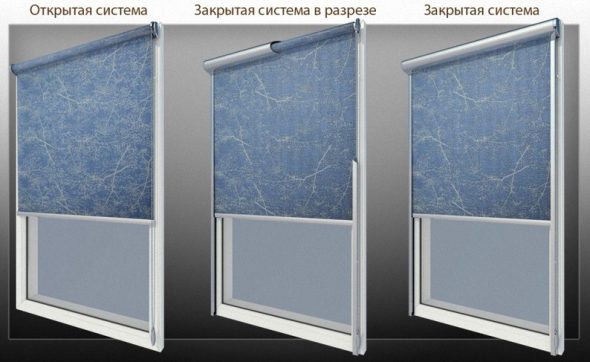
Open and closed shutters for fastening Roman blinds to the window
- mechanical or electrical;

Mechanical fastening element curtains on chains

The electric carcass is able to withstand heavy loads and is often used on panoramic windows.
- with manual or electronic remote control.

Automatic Roman Blinds with Electric
Before you start, prepare everything you need: a bar, fasteners, scissors, a screwdriver, screws, material and adhesive tape for fabrics, double-sided tape, rings, strips for fixing folds. If there was no lath, a dense textile tape will do; you need from 3 to 6 cuts (or slats) along the length equal to the width of the finished web.
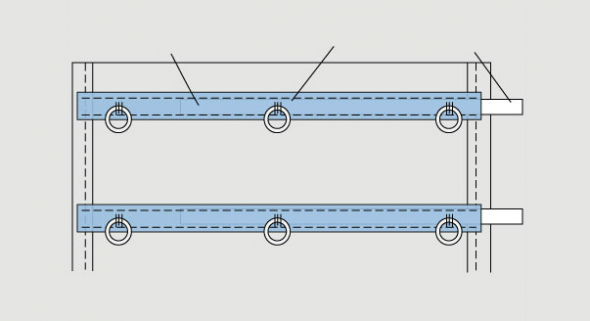
Elements of the Roman curtains - pins and rings for the cord lifting mechanism
Harvest 2-3 cords to control the curtain, each equal to twice the length of the pattern. Weights are suspended from the ends: jewelery, large beads, brushes, rings. Sometimes a special mechanism is used to pull up the cord, which rotates by winding the cord or chain. They are of two types: cord or rotor-chain.
Important! Rotary-chain cope with curtains weighing up to 7 kg, cord - only up to 4 kg.
Materials and care for them
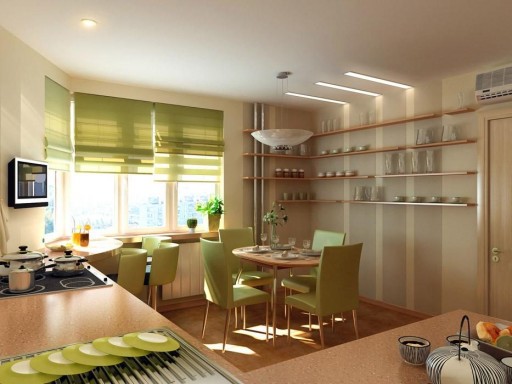
Choose a fabric for sewing Roman curtains so that it blends harmoniously into the interior
Depending on how dark it should be when the Roman curtains are closed, the material is chosen for work. Most often consider various natural or artificial fabrics, but there are also blinds made of paper, plastic, various plates or woven fabrics of any sufficiently elastic material. Materials manufactured by an industrial method are additionally treated with dust-repellent impregnations, antistatic agents, teflon coating and an anti-burning compound.
With self-made it is easiest to find beautiful natural fabrics:
- linen;
- wool (with a small percentage of artificial additives, so as not to stray);
- cotton, blended fabrics with viscose;
- polyester;
- nylon.
Important! Fabrics with special impregnations used in production are not washed with a washing machine, cleaned with care so as not to damage the outer coating.
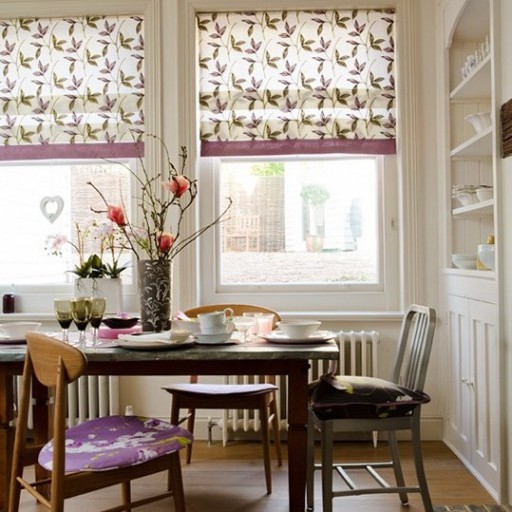
An interesting pattern on the fabric is often an important decorative element of Roman blinds.
It is reasonable to relate the choice of material by composition to the purpose of the room where it will be used. Natural fabrics are good for rooms where children live or people relax. Synthetic options are suitable for kitchen, bathroom, walk-through rooms - verandas, loggias, corridor, if it has a window or you need to close a niche with something. By the same principle design is selected.
Natural materials without additional impregnations are washed according to the usual rules. Machine wash is allowed if the cloth does not sit down at the same time (there are no bars inside). Curtains with complex weaving, pattern, finish are washed by hand, then very carefully squeezed. Dry straightened, immediately hanging them in place. To remove creases, the fabric is gently ironed with an iron, but it is better to use a special steamer.
Step-by-step instructions for beginners how to make a Roman curtain with your own hands
The first stage of work on the manufacture of Italian blinds is the choice of material, the procurement of all necessary on the above list. Remember that the instruction recommends that Roman do-it-yourself curtains be made from scrap materials.
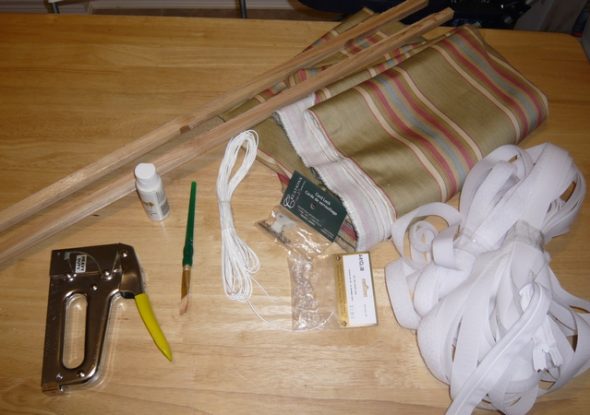
Materials and tools for making roman blinds
The second stage - window measurements, drawing up patterns, cutting out material. If slats are used, each curtain is made of two equal panels, if a textile tape is of one. If the fabric has a pattern, watch how it is located.

Marking fabric, pattern with allowances and sewing scheme
The third stage is sewing. The peculiarity of the Roman curtains is that along the entire length of the canvas it is necessary to fasten the slats, which, with the help of rings and cords sewn to them, will create folds, keeping the fabric raised.
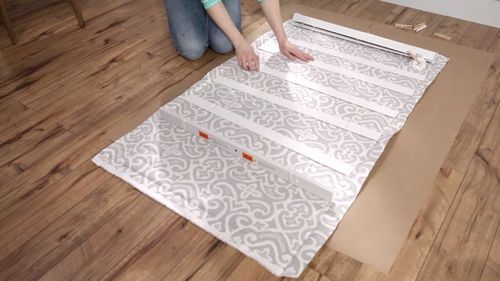
Mark up the folds of our curtains, chart and scribble
The variant of the two panels is folded face out, the pockets for the slats are adjusted, the distance between them is 1/4, 2/4, of height.After the edges are machined, a slide is made below the weighting agent, at the top there is a wide gate under the eaves.
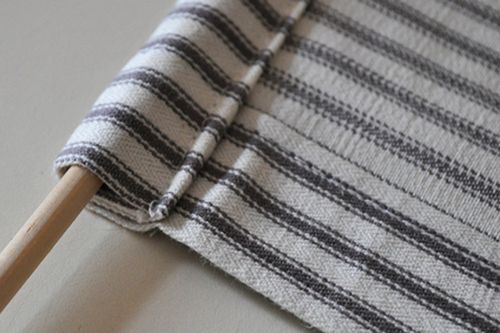
In order to make the curtain we insert a special bar in the gateway
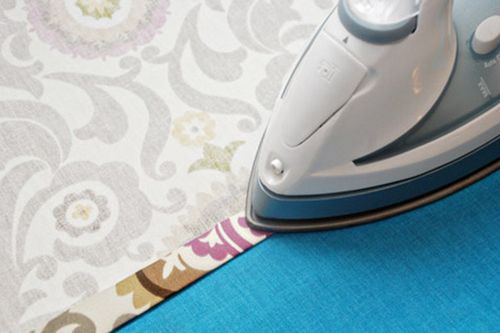
We iron off bent edges
If the canvas remains single, then the textile tape is tweaked from the back (in the same way as the pockets for the slats above). Rings are sewn to the ribbon under the cords along the edges or 10 cm from the edge, as well as in the middle. If the curtain is attached with a velcro tape, it will be trimmed along the top edge.

Fasten the tape-Velcro on the eaves
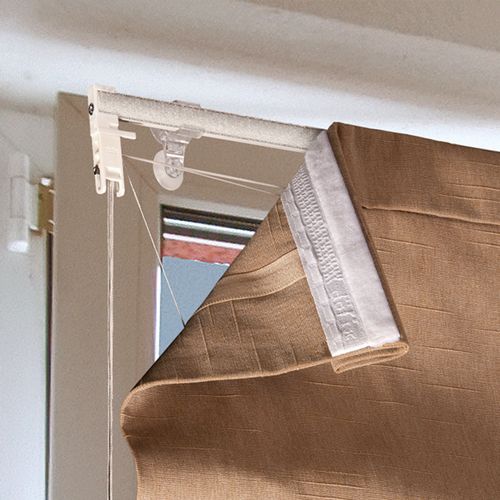
Sew the second Velcro onto the upper back of the curtain and fasten it to the eaves
Important: if the fabric is not very thick, then the edges can be bent and secured with an iron by paving a sewing glue tape along the fold.
The fourth stage - installation of the roleta or cornice. Finished roller blinds can be glued to the frame with mounting tape. On a self-made wooden plank, first fasten one side of the velcro tape and rings under the cords, then install it on self-tapping screws.
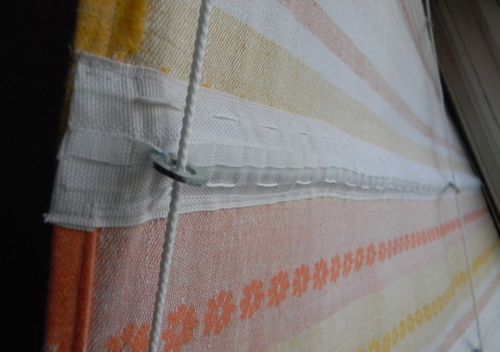
Plastic rings are placed from the inside and sewed by hand
The fifth stage - cords are pulled, curtains are hung on the tape-velcro. It is simply attached to the finished roll according to the instructions (they may vary according to the design of different manufacturers).
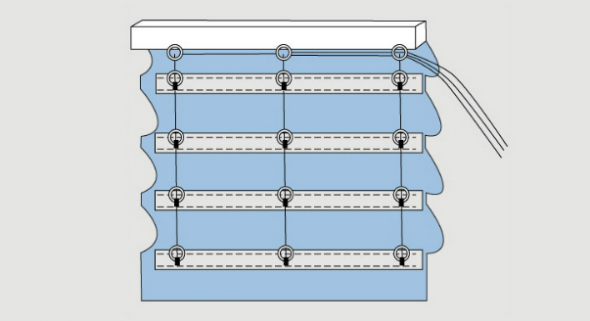
When all the cords are threaded, run them through the upper mounting rings to one side.
Important: on the side where the end of the cord lifting the canvas is put, it is worth reinforcing the hook on the wall for which this control will be attached.
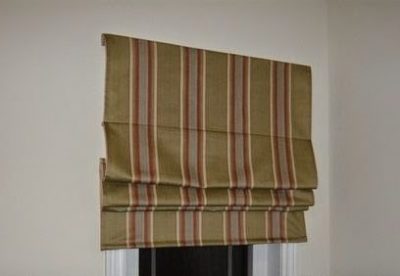
Simple roman blind, made by hand
Roman curtains of dense heavy materials, especially with a large value, it is best to hang out on industrial shutter with electric drive system on a roller shutter. It will cost more, but it will last longer, and using such blinds is more convenient. The mechanism can be opened and closed remotely.
Roman curtains in the kitchen with their own hands
One of the most popular places to use Roman curtains is the kitchen. Thus, the window sill is released and turns into an additional working space or place where decorative plates, a vase or something else is placed. Short blinds in the window opening are less dirty and do not accumulate dust. They are easy to refresh with a brush. Teflon coating materials are very good here, but finding them on sale is not easy. The easiest way to do this is through an online store.
Important! When purchasing materials with special impregnations, ask the seller about the presence of a hygienic certificate.
Dense, opaque curtains in the kitchen are not needed, more often light and translucent ones take root here. They make the room visually more spacious, saturated with air. In the kitchen there is no need to create a good blackout, so they use light shades, a grid combined with decoration, non-woven materials. They come in three degrees of transparency:
- transparent to 80-90%;
- translucent;
- about 70% blackout.
It is in the kitchen that designers like to use curtains with photoprints or large drawings. The choice of topics is wide: from the classic cage and stripes, to real photographs of vegetables, fruits, dishes, or reproductions of pictorial still lifes.
Scheme of the Roman curtains, details of the design with photos for beginners
Roman blinds work the same way as yacht sails. They are tightened with the help of "rigging" - ribbons, chains or cord. When the length of the tape is chosen, the canvas is gathered in folds, the smooth shape of which is attached by rigid strips sewn at equal distance from each other. When the tape is free, matter completely closes the window.
In the Roman curtains there is nothing that distinguishes them from the more modern roll-curtains: the side rails. These elements would not allow the fabric to fold. However, if it is very thin, then the side seams are reinforced with ordinary textile tape.
If you do not use slats or rigid textile tape when making your own blinds, the folds will be cascading, soft and plastic. Then the layout of the rings through which the belts for lifting the curtains pass will change. They are not sewn around the edges of the canvas, but closer to the middle so that the folds are more interesting.
Please note: Roman blind never opens the window completely.
Recommendations for beginners in making roman blinds
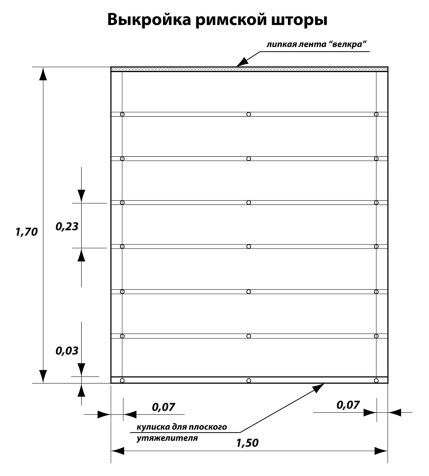
Pattern Roman blinds with measurements
For those who first decided to make their own Roman blinds, the main recommendation is to safely get to work without fear. The query "Roman curtains do-it-yourself step-by-step instructions" will give you many tips on this topic. It is worthwhile to dwell on the most understandable design, for the beginning to get ready-made roller blinds. It is glued with mounting glue or tape to the frame, saving itself from much of the work.
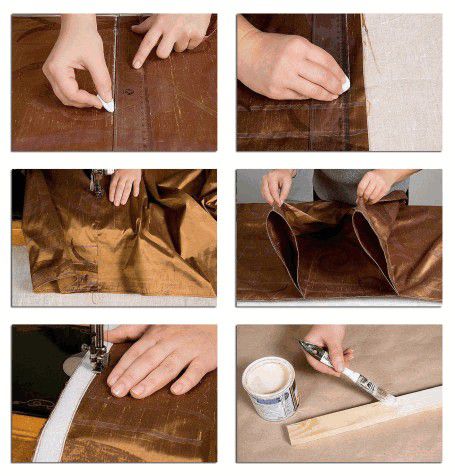
Cutting fabric for roman blinds
Important! Materials should choose the most simple, already familiar, so that later did not have long to think about how to clean them.
Remember that it is better to clean the stains on the fabric immediately, without letting them soak and dry - then washing becomes noticeably easier. Also it is not necessary to buy expensive fabric for the first experience. In time, the inevitable blemishes will become noticeable, and you will want to redo everything anew. Prepare in advance for parting with your first prototype without regrets.
When cutting the fabric, make sure that it does not warp. Check the direction of the base - if you cut out a rectangle along an oblique, then the canvas will hang obliquely, even if you carefully observe all right angles. The easiest thing to do is to make paper curtains - the costs are minimal, the work is less, then very soon you can replace without regret something more interesting. At the same time, the attachment mechanism is retained for use further
Conclusion
Roman curtains are very simple, are created personally, but require accuracy and care. They serve for a long time, they are easy to care for, but at the same time they are easy and quick to replace. This is a great option for those who often like to make small but pleasant changes to the interior.
Video: Roman curtain do it yourself


